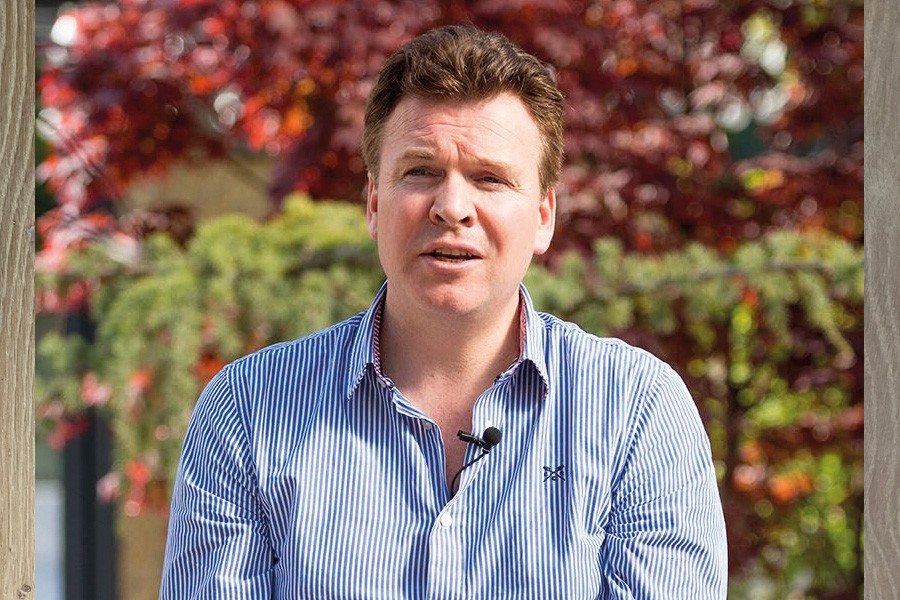Keeping on top of patio maintenance can help eliminate issues and ensure outdoor areas are safe and usable year-round, says Mark Atkins.
AS the nights draw in, we tend to turn a blind eye to outdoor spaces. Even hospitality areas generally get little attention over the autumn and winter – and yet, they would benefit greatly from a little maintenance. It would also remove the need to carry out a time consuming – and often costly – deep clean in the spring.
A regular sweep and occasional clean will maintain the aesthetic and performance features of a paver. Dirt and residue, decaying leaf matter and algae can quickly build-up, staining unsealed surfaces and causing a slip hazard. Keeping on top of maintenance can help eliminate these issues and ensure that outdoor areas are safe and usable year-round.
Why pressure washing makes matters worse
Pressure washing may seem like the quickest and easiest way to clean pavers but it will only wash dirt off the surface.
Use of excessive amounts of water can exacerbate staining and slip issues. It’ll also do little to remove black spot and algae which, once established, sends its tendrils or ‘hyphae’ down into the paver, searching for nutrients. (In fact, the extra dose of water improves conditions and encourages spread.) Pressure washing can also loosen grout, erode the surface of the paver and damage any protective sealant applied.
It also uses large quantities of water, which can be both costly and detrimental in environmental terms. A specialist treatment, on the other hand, will react with ingrained residue and organic matter, drawing it out of the stone’s porosity. It will also help to prevent regrowth of algae and other organic material – and, being diluted in a bucket of water, will conserve water.
Specialist treatments such as ECOPROTEC Intensive Cleaner, draw out dirt and are especially effective at removing leaf stains. Application is fast and easy: the cleaner is diluted with water according to conditions – 1:10 for mild staining and 3:10 for severe staining – and applied with a brush, broom or mop. When tackling severe staining, the pavers should be agitated with a scrubbing brush and the treatment left to act for between five-to-10 minutes, adding more solution to keep the surface wet. Any residue should then be swept up and the surface rinsed with clean water.
Tackling a build-up of black spot and algae
If paving hasn’t been regularly maintained, there is likely to be a build-up of algae. Algae thrives in damp places, so can be particularly prevalent in the autumn and winter. It comes in lots of different forms and often causes a green film, growth or powdery deposit on pavers.
The term algae includes moss; liverwort – the flat green growth with tiny leaf-like lobes, crust-like lichen, black spot and jelly-like growths caused by a cyanobacteria called nostoc.
Black spot can be particularly hard to remove, once it has become established. Originating from plants and trees, black spot is a dust-like lichen microspore carried by the wind and rain. It leaves tell-tale black – or sometimes white – spots on the surface of pavers. Black spot colonises on stonework, taking about two-to-three years to get really established below the surface.
Certain leaves can also be a particular menace, especially sycamores. Aphids that live on the surface of the leaves excrete a sugary substance that provides a food source for algae. The combined sugar and bacteria leaves a tell-tale black spot stain and sometimes whole leaf prints.
None of these growths are hazardous – in fact, lichen is particularly common in areas with clean air, so its appearance can be a positive sign – but slippery hard surfaces can be. The open texture of a stone paver enables microspores to spread more easily if surfaces aren’t maintained – but even less porous materials such as porcelain aren’t immune.
Any treatment used to remove a build-up of algae needs to have a bleaching action, to restore the colour of the paver. It also needs to target the hyphae below the surface. But care needs to be taken – if a treatment is acidic, it can damage acid sensitive material, erode grout and damage any sealer applied. We recommend treatment with ECOPROTEC Black Spot & Algae Remover, which can be used on all types of natural stone, concrete, brick and porcelain.
It removes organic residues – including black spot, lichen, moss and algae – shifting surface stains and breaking down the hyphae below the surface, preventing regrowth. When applying the remover, it’s important to treat the whole area of paving, for a uniform appearance. It should also be left to act for the correct amount of time, so that it’s able to penetrate deep into the porosity; if hyphae are left untreated, they’ll spread back to the surface and throughout the paver.
Stopping water ingress
Once pavers are clean and dry, it’s an ideal time to replace any lost jointing sand or cement mortar. This will stop the ingress of water and will help protect paving during the freeze and thaw cycle of winter.
Adding in protection
If pavers haven’t been sealed, consider applying a protective treatment. We recommend ECOPROTEC Patio Sealer, Ultimate Sealer and Colour Enhancing Sealer for natural stone and our barrier treatment, ECOPROTEC Pre Grout Protection for matt porcelain pavers.
These treatments are non-film forming and will help prevent the absorption of moisture and organic particles. They’re also water-based, so can be applied over some residual moisture. As a rule of thumb, it’s safe to apply a treatment provided no rain is forecast for 24 hours, either side of application.
01823 666213
technical@ecoprotec.co.uk
www.ecoprotec.co.uk
Mark Atkins is technical director, LTP


